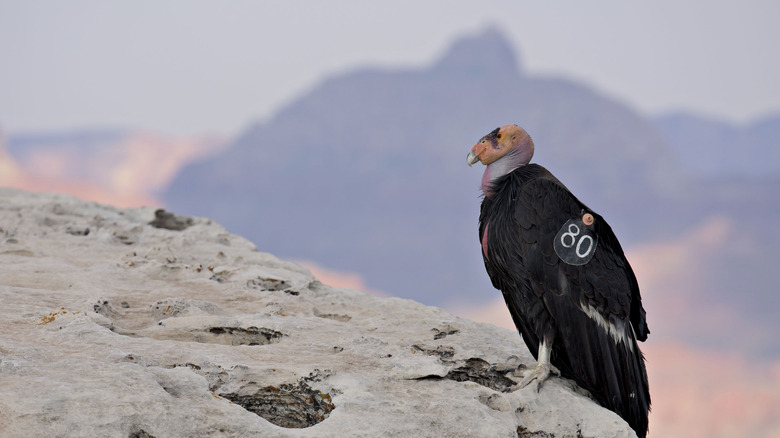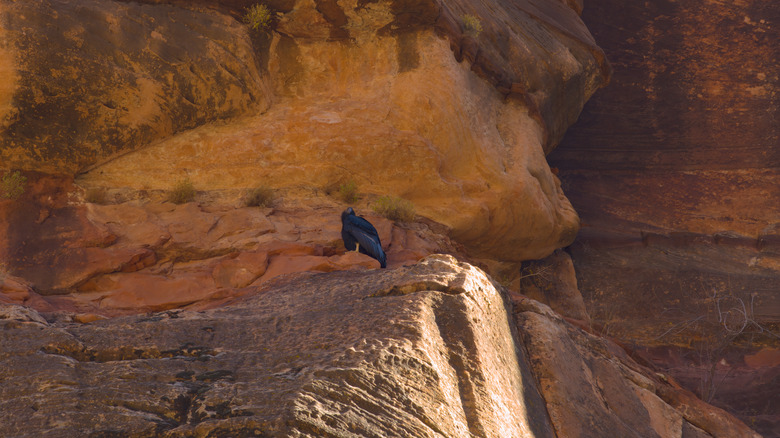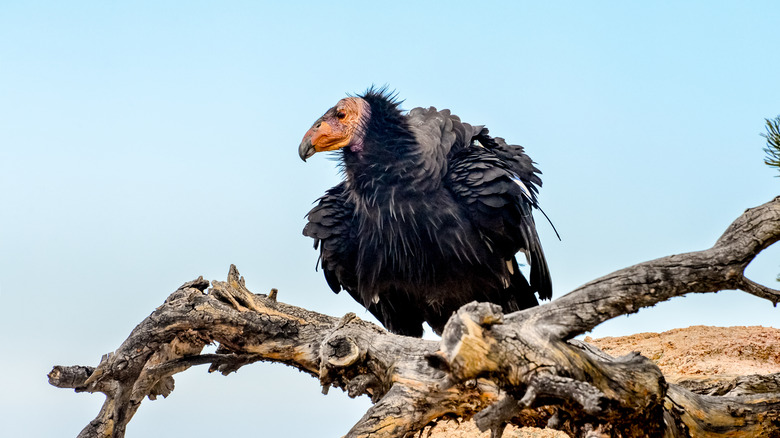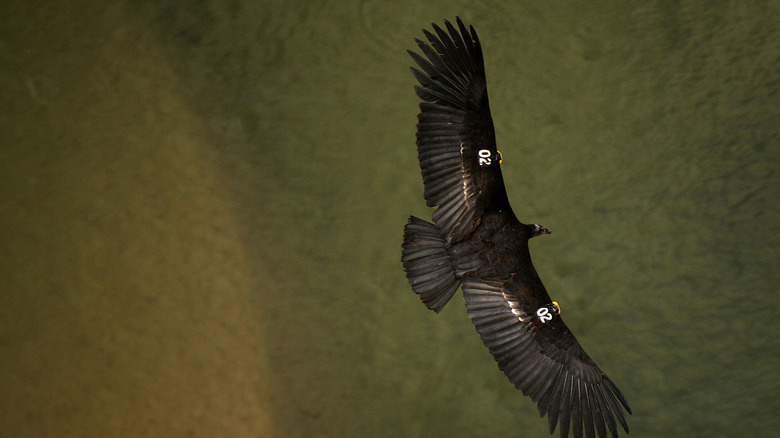The Largest Bird In North America Is Also One Of The Rarest
The California condor's wingspan is a staggering 10 feet across and comfortably flies 15,000 feet high – a comfortable 500 feet higher than Mount Whitney, the highest mountain in the contiguous United States. Also like Mount Whitney, the condor was once sacred to the indigenous people who lived in California. With the arrival of colonizers from Europe, the number of California condors began to decrease. Their numbers were devastated as humans increasingly hunted game with lead bullets. When the condors scavenged these kills, they got lead poisoning. Today, condors are still at risk from human activity in their areas, both from lead poisoning and pesticides that make their precious eggs more fragile.
These enormous birds have been officially endangered since 1967, and by 1987 it is believed that there were only 27 individual California condors left in the world, and 17 of those were already captive. Thanks to one of the most extensive conservation efforts in history, these incredible creatures may be making a comeback.
They have long childhoods
The California condor isn't just big, it also has a long life and can live to be 60 years old. Like most amazing things, these birds take time to reach their true potential.
California condors only lay a single egg every two years. When the baby bird hatches into its enormous, 3 foot nest, which is usually constructed out of rock, bark, and bone, it is unable to do anything for itself and requires constant care from their parents for at least six months. Both the mother and father sit on top of the baby to keep it warm and safe and collect food for it. While the adults have almost no natural predators due to their size, the babies are vulnerable and can be killed by ravens, eagles, and bears. Although they can fly after six months, the babies will still follow their parents for another 1-2 years as they learn how to live on their own. They still won't be fully mature for another 4-6 years.
Saving the California condor
The California condor conservation program is one of the most extensive in history, with the tiny number of surviving wild condors being captured for a breeding program in 1987. At that time, there were only 27 of these incredible birds anywhere on the planet. By 1992, there were enough birds to begin slowly releasing them again so that they could establish wild populations in California again.
There are still many threats to California condors, including power lines, lead ammunition, and dangerous human trash, from glass to antifreeze. With so few of these fascinating birds left in the wild, each one is precious. According to the U.S. Fish & Wildlife Service, one thing that people who live near wild populations of California condors can do to help is simply picking up litter they find outdoors. In particular, small shards of glass and bottle caps are a concern, as they can be ingested or accidentally fed to their young.
They once lived all over the United States
Although they are known as California condors, birds capable of flying hundreds of miles per day were not limited to a single state. In fact, it is believed that in prehistoric times, the California condor lived all over North America, likely soaring high above modern-day New York. When European settlers arrived, the condor primarily lived on the West Coast, between British Columbia and Mexico. Soon, they were living in just a few spots in California.
At one time, there was not a single free California condor in the world. Today, there are likely around 300 California condors in the wild, living in California mountains, by the Pacific coast, and close to the Grand Canyon in Arizona. Although there is still a long way to go, the success of the wild California condors is proof that although humans have driven many creatures to the brink of extinction, we also have the power to help them come back.



